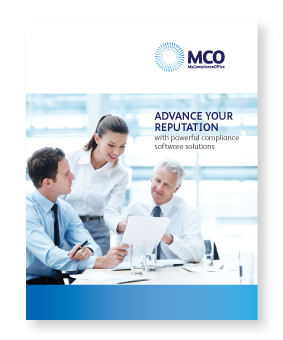Senior Managers Regime Explained
You can download a full copy of the slides from this webinar.
Interested in learning more about SMCR?
Download our whitepaper; 'Senior Managers and Certification Regime - How to Prepare Your Organisation'.
Full video transcript available below:
Welcome and thank you for joining today's webinar hosted by me, Joe Boyhan of MyComplianceOffice, and Gregory Brandman and Simon Collins of Eversheds Sutherland.
|
This just covers in a little bit more detail the senior manager's regime, as in what's impacting senior managers? I want to just highlight a few points here. There's quite a bit of information on this slide, but there are currently 17 senior management functions that are held by UK firms. It may not be that all of those functions are actually present within the firm, but typically they will be. The CEO, the CFO, Chief Risk Officer, and then heads of business units that they, business units that are significantly large. |
|
In addition, and I think this is one to look out for, the PRA, is looking at introducing, we believe this is going to be in November, a new SMF 23. This is the operational head, if you like. This on the back of the development in the digital technology, the impacts of cyber issues, the development of things such as "robo advice" and some of those technological improvements that are being made to financial services to ensure that there is a nominated individual who is responsible for that particular area, so this is a key role that the regulator's actually view as needing to be called out more than a general role. |
|
Again, this where the regulator is beginning to focus attention on particular functions that could cause serious potential risk to the financial services industry, firms alike, and obviously, customers. |
|
Senior managers, they're going to be actually pre-approved by the regulator. Each senior manager has a statement of responsibility, which clarifies exactly what their role is. Those stated responsibilities are held by their regulator as well and need to be updated if there is significant change. Important as well, they do need to be too bland at all. They need to be concise and clear, and whether our perhaps specific projects that someone is responsible for, to actually call those out as well. |
|
Just another point here, this is a UK regime at this stage, but the regulator is very keen to understand if there are overseas individuals who potentially have an impact on the performance of the UK entity. That is why a number of overseas individuals, where for instance, the UK entity is owned by, for instance, a US or European entity. Then the senior management there who could have influence, who may be based overseas, are brought into the regime themselves. Could we have he next slide, please?
This webinar was co-hosted with Eversheds-Sutherland |


